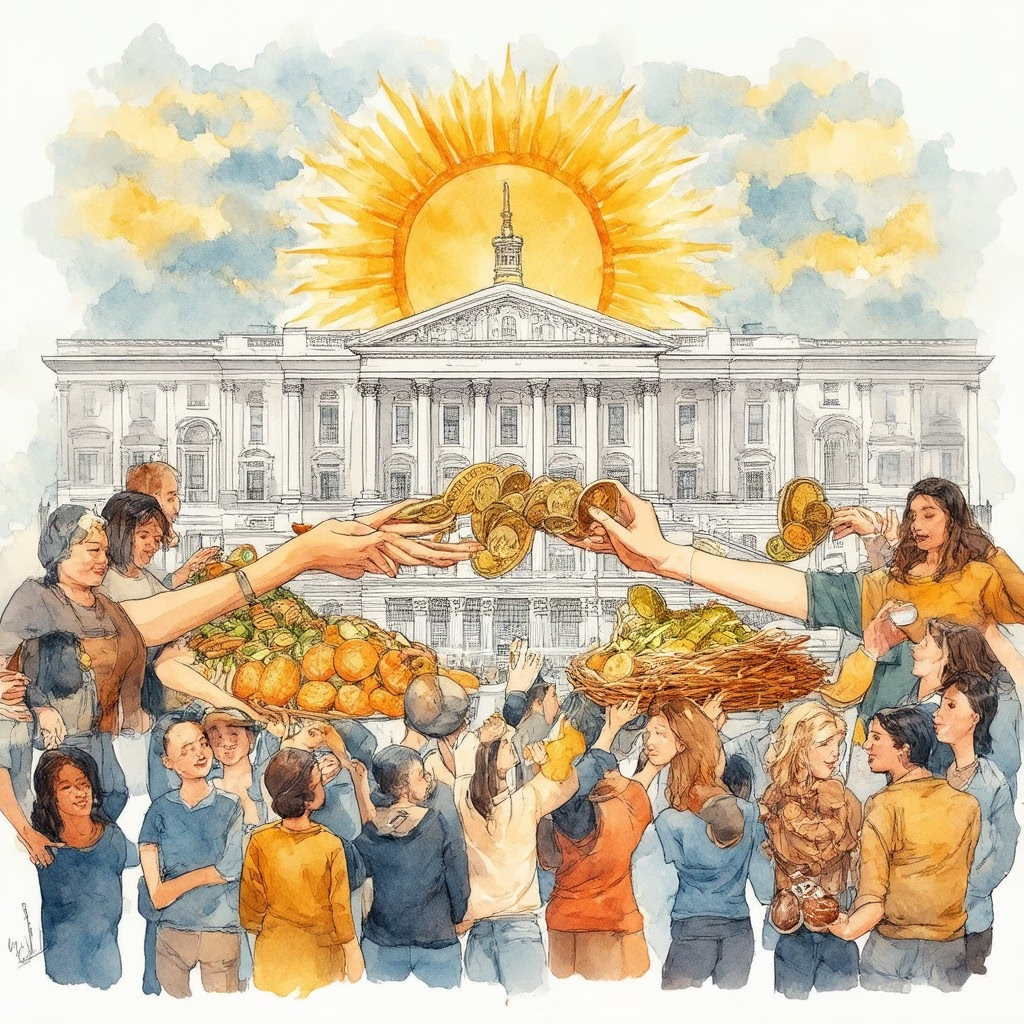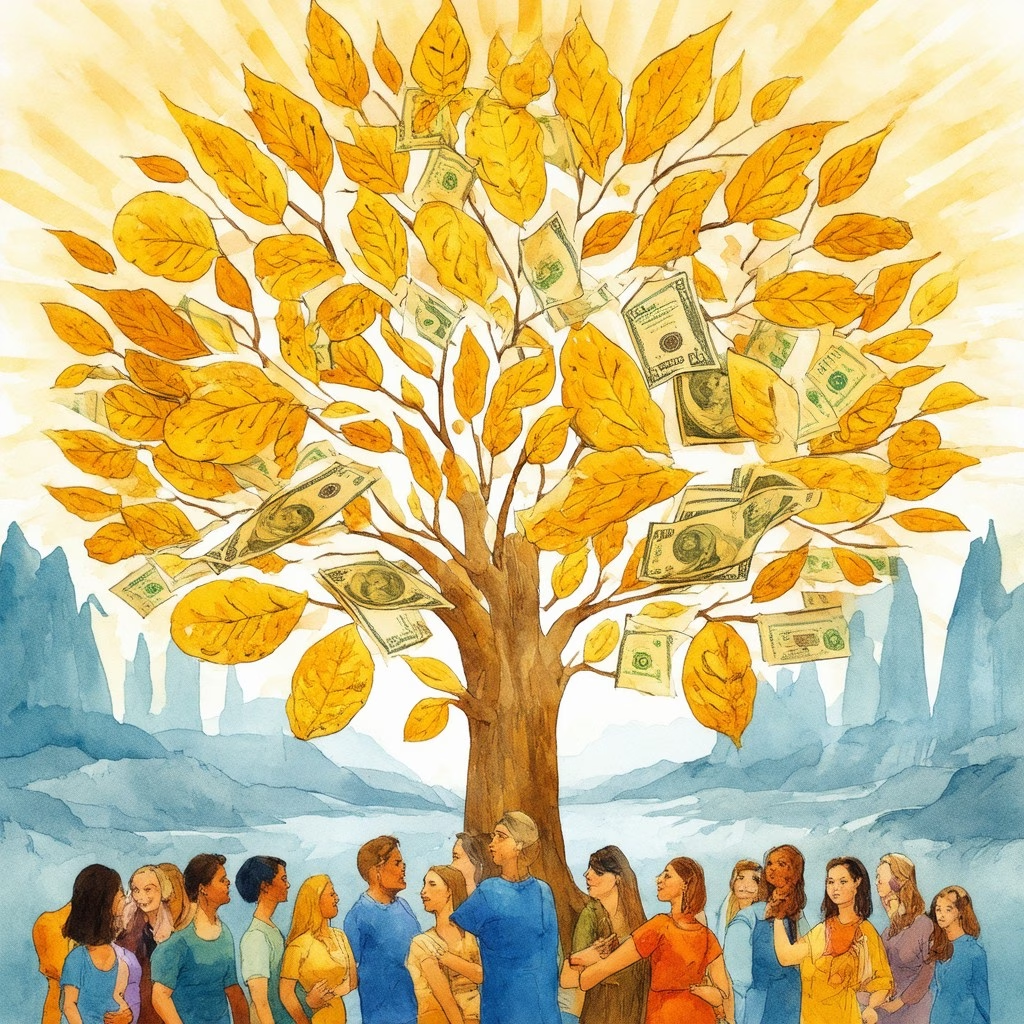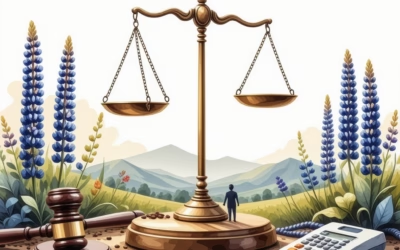Key Takeaways
- Explore various government assistance programs available in 2022, including free cash and food aid, to alleviate financial burdens.
- Eligibility for financial support programs often depends on income levels, household size, and specific program requirements.
- Access essential resources like the Supplemental Nutrition Assistance Program (SNAP) for food aid and Temporary Assistance for Needy Families (TANF) for cash assistance.
- Colorado’s Colorado Works program offers targeted support for low-income families, including cash assistance and job training.
- Understand the impact of the American Relief Program on unemployment benefits, direct payments, and small business support during economic recovery.
- Utilize reliable resources such as Benefits.gov and USA.gov to navigate government assistance options effectively.
In 2022, navigating the landscape of government assistance can be a daunting task, especially for those seeking financial support programs that can alleviate their economic burdens. This comprehensive guide will illuminate the various government assistance programs available, including free cash, food aid, and eligibility criteria tailored to your specific needs. From exploring what free stuff you can get from the government to understanding the intricacies of the American Relief Program, we will delve into essential topics such as cash assistance for single persons and the income thresholds that determine who qualifies for government help. Additionally, we will provide insights into Colorado’s assistance for low-income individuals and answer pressing questions like, “Is the government giving out free food?” and “What assistance do I qualify for?” Join us as we uncover the resources and support available to help you secure the financial assistance you deserve in 2022.
What free stuff can I get from the government?
Government benefits and assistance programs offer a variety of free resources to eligible individuals and families. Here are some key categories of assistance you may qualify for:
- Food Assistance: Programs like the Supplemental Nutrition Assistance Program (SNAP) provide financial assistance for purchasing food. According to the USDA, SNAP helps millions of Americans afford nutritious food each month.
- Health Insurance: The Affordable Care Act (ACA) offers free or low-cost health insurance options through Medicaid and the Children’s Health Insurance Program (CHIP). These programs are designed to ensure that low-income families have access to essential healthcare services.
- Housing Assistance: The U.S. Department of Housing and Urban Development (HUD) provides various housing assistance programs, including public housing and housing choice vouchers, which help low-income families afford safe and decent housing.
- Utility Bill Assistance: The Low Income Home Energy Assistance Program (LIHEAP) helps eligible households pay their utility bills, ensuring that families can maintain essential services like heating and cooling.
- Welfare and Financial Assistance: Temporary Assistance for Needy Families (TANF) provides financial aid to families with children in need. This program aims to help families achieve self-sufficiency through job training and employment services.
- Social Security Benefits: Social Security provides financial support to retirees, disabled individuals, and survivors of deceased workers. This program is crucial for many Americans in maintaining their standard of living.
- Government Checks and Payments: Various programs offer direct payments to eligible individuals, including unemployment benefits and stimulus checks during economic downturns.
For more detailed information on these programs and to determine your eligibility, visit USAGov or consult local government resources.
Government cash assistance programs overview
Government cash assistance programs are designed to provide financial support to individuals and families in need. These programs can help cover essential expenses such as food, housing, and healthcare. Some of the most notable government cash assistance programs include:
- Temporary Assistance for Needy Families (TANF): This program offers financial aid to low-income families with children, helping them meet their basic needs while encouraging self-sufficiency.
- Supplemental Security Income (SSI): SSI provides cash assistance to elderly, blind, or disabled individuals who have limited income and resources.
- Unemployment Insurance: This program offers temporary financial assistance to individuals who have lost their jobs through no fault of their own, helping them while they seek new employment.
To learn more about these programs and see if you qualify for government assistance, visit this guide on financial assistance from the government.
List of government benefits available in 2022
In 2022, various government benefits are available to assist individuals and families. Here’s a list of some key benefits you might be eligible for:
- Food Assistance Programs: Including SNAP and local food banks.
- Health Coverage: Medicaid and CHIP for low-income families.
- Housing Assistance: Public housing and rental assistance programs.
- Utility Assistance: LIHEAP for energy costs.
- Cash Assistance: TANF and SSI for financial support.
For comprehensive information on these benefits, check out this resource on government assistance programs.

What is the Colorado assistance for low income?
In Colorado, assistance for low-income individuals and families is primarily provided through the Temporary Assistance for Needy Families (TANF) program, commonly referred to as Colorado Works. This program offers cash assistance to eligible families with very low incomes, aiming to promote self-sufficiency through job preparation, work opportunities, and family stabilization.
Overview of Colorado assistance programs for low-income individuals
Colorado Works is a key component of the state’s efforts to support low-income families. The program is designed to provide essential financial aid and resources to help families achieve stability and independence. Key components of Colorado Works include:
- Cash Assistance: Provides financial support to help cover basic needs such as food, housing, and utilities, allowing families to focus on employment and education.
- Employment Services: Participants receive access to job training, resume workshops, and employment counseling to enhance their job readiness and marketability.
- Child Care Assistance: The program offers support for child care costs, enabling parents to pursue work or education without the burden of high child care expenses.
- Supportive Services: Colorado Works connects families with additional resources, including mental health services, substance abuse treatment, and housing assistance, to address barriers to employment.
- Eligibility Requirements: To qualify for Colorado Works, families must meet specific income and asset limits, and they are required to participate in work-related activities.
For more detailed information about the Colorado Works program and to determine eligibility, individuals can visit the Colorado Department of Human Services website or contact their local county office. Additionally, resources such as the Colorado 2-1-1 helpline can provide further assistance and information on available services for low-income residents.
Do I qualify for any government assistance in Colorado?
Determining eligibility for government assistance in Colorado involves several factors, including income, household size, and specific program requirements. To find out if you qualify for any government assistance, consider the following steps:
- Check your household income against the eligibility guidelines for programs like Colorado Works and other government assistance programs.
- Assess your family size and any dependents, as these factors can influence the level of assistance available.
- Visit the official government benefits site to explore various assistance options and their eligibility criteria.
- Contact local agencies or the Colorado 2-1-1 helpline for personalized assistance and guidance on available resources.
Understanding your eligibility is the first step towards accessing the help you need. If you have questions about specific programs or need assistance with the application process, reaching out to local resources can provide valuable support.
What is the American Relief Program?
The American Relief Program, officially known as the American Rescue Plan Act of 2021, is a comprehensive legislative package aimed at providing economic relief to individuals, families, and businesses affected by the COVID-19 pandemic. This program includes several key components designed to alleviate financial burdens and support recovery efforts.
Details on the American Relief Program and its benefits
- Direct Payments: The program includes stimulus checks of up to $1,400 for eligible individuals and $2,800 for married couples, along with an additional $1,400 per dependent. This financial assistance aims to alleviate immediate financial burdens.
- Unemployment Benefits: The American Relief Program extends unemployment benefits, providing an additional $300 per week to those receiving unemployment insurance through September 2021. This extension is crucial for individuals who lost their jobs due to the pandemic.
- Child Tax Credit Expansion: The program significantly increases the Child Tax Credit for 2021, raising it to $3,000 per child aged 6 to 17 and $3,600 for children under 6. This expansion is designed to support families and reduce child poverty.
- Support for Small Businesses: The program allocates funds for the Paycheck Protection Program (PPP) to help small businesses retain employees and cover operational costs. Additionally, it provides targeted Economic Injury Disaster Loans (EIDL) and grants for hard-hit sectors.
- Funding for Vaccination and Testing: A significant portion of the funding is dedicated to COVID-19 vaccination efforts, testing, and contact tracing, which are essential for controlling the spread of the virus and ensuring public health safety.
- State and Local Government Aid: The American Rescue Plan provides $350 billion in aid to state and local governments to help them manage budget shortfalls and maintain essential services during the pandemic.
- Housing Assistance: The program includes provisions for rental assistance and mortgage relief to prevent evictions and foreclosures, ensuring housing stability for vulnerable populations.
- Nutrition Assistance: The plan expands the Supplemental Nutrition Assistance Program (SNAP) benefits, increasing monthly allowances to help families access food during economic hardship.
Government assistance programs included in the American Relief Program
The American Relief Program encompasses various government assistance programs aimed at providing financial support to those in need. These programs include:
- Supplemental Nutrition Assistance Program (SNAP): This program helps low-income individuals and families purchase food, ensuring they have access to nutritious meals.
- Emergency Rental Assistance: Designed to assist tenants who are unable to pay rent due to the pandemic, this program helps prevent evictions and supports housing stability.
- Child Care Assistance: The program provides funding to help families afford child care services, enabling parents to return to work or seek employment.
- Small Business Administration (SBA) Loans: These loans are available to help small businesses recover from the economic impact of the pandemic, ensuring they can continue operations and retain employees.
For more detailed information on these programs, you can visit the official government benefits site.
What income gets government assistance?
Understanding the income thresholds for government assistance is essential for individuals seeking support through various government assistance programs. These thresholds determine who qualifies for benefits and how much assistance one can receive. Generally, government assistance programs, such as the Supplemental Nutrition Assistance Program (SNAP), require that household income falls below specific limits. For SNAP, gross monthly income—before deductions—should be at or below 130% of the federal poverty line. As of federal fiscal year 2025, this means:
- For a family of three, the gross monthly income limit is approximately $2,152.
- For a single individual, the limit is around $1,473.
- For a family of four, the limit is about $2,654.
Eligibility also considers other factors such as household size, expenses, and resources. It’s important to note that states may have additional criteria or variations in income limits. For the most accurate and updated information, individuals can refer to the U.S. Department of Agriculture’s Food and Nutrition Service website or consult local resources. Additionally, platforms like Gov Guider can provide personalized assistance and guidance on navigating these programs effectively.
Who qualifies for government assistance based on income?
Determining who qualifies for government assistance based on income involves understanding the specific eligibility criteria set by various programs. Generally, individuals and families must demonstrate financial need, which is assessed through income levels relative to the federal poverty line. In addition to income, other factors such as age, disability status, and family size can influence eligibility.
For instance, government help programs often cater to low-income households, providing essential resources for utility and medical bills. Similarly, welfare benefits for single persons are designed to assist those who meet specific income thresholds. To find out if you qualify for government assistance, consider using tools available on the official government benefits site, which can help you navigate the various options and determine your eligibility based on your unique circumstances.

Is the government giving out free food?
Yes, the government does provide free food assistance through various programs aimed at supporting individuals and families in need. One of the primary programs is The Emergency Food Assistance Program (TEFAP), which is administered by the Food and Nutrition Service (FNS) of the U.S. Department of Agriculture (USDA). TEFAP helps supplement the diets of low-income individuals by distributing emergency food assistance at no cost. The USDA supplies 100% American-grown USDA Foods and provides administrative funds to states to facilitate the operation of TEFAP. This program is crucial for addressing food insecurity, especially during times of economic hardship or natural disasters.
Overview of food aid programs and eligibility
In addition to TEFAP, several other government assistance programs provide food aid. The Supplemental Nutrition Assistance Program (SNAP) offers monthly benefits to eligible low-income individuals and families to purchase food. Eligibility for SNAP is based on income, household size, and other factors. The Women, Infants, and Children (WIC) program also provides nutritious food, education, and healthcare referrals to low-income pregnant women, new mothers, and young children. To determine if you qualify for these government assistance programs, you can visit the USDA SNAP program website for more information.
Getting help from the government for food assistance
To access food assistance, individuals can contact local food banks and community organizations that participate in these federal assistance programs. Many states also have dedicated resources to help residents navigate the application process for government assistance. For comprehensive information on food assistance programs available in your area, consider visiting this guide on food assistance programs. This resource can help you understand what assistance you may qualify for and how to apply effectively.
What is free cash in government?
Free cash in government refers to the portion of a municipality’s fund balance that is available for appropriation by the governing body, such as a Town Meeting. This financial term is crucial for local governments as it represents unallocated funds that can be used for various purposes, including funding new projects, covering unexpected expenses, or replenishing reserves.
The balance of free cash increases under two primary conditions:
- Excess Revenues: When actual revenues collected exceed the budgeted revenues, the surplus contributes to the free cash balance. This can occur due to higher-than-expected tax collections, grants, or other income sources.
- Under-Expenditures: When actual expenditures are less than what was appropriated, the difference adds to the free cash. This situation often arises from cost-saving measures or delays in project implementation.
Free cash is typically certified annually by the state’s Department of Revenue, ensuring that municipalities have an accurate and reliable figure to work with. It is important for local governments to manage free cash prudently, as it can significantly impact financial planning and budgeting for future fiscal years.
For more detailed insights on municipal finance and free cash management, resources such as the Massachusetts Department of Revenue and the Government Finance Officers Association provide valuable guidelines and best practices.
Financial assistance from government: grants and cash aid
Government assistance programs often include grants and cash aid designed to support individuals and families in need. These programs can provide essential financial help, especially for those facing economic hardships. Here are some key points regarding financial assistance:
- Grants: Unlike loans, grants do not require repayment. They are typically awarded based on specific criteria, such as income level or family size. Programs like the U.S. government benefits site can help you identify available grants.
- Cash Aid: Cash assistance for single persons and families can be accessed through various government assistance programs. This aid can help cover basic living expenses, including housing, food, and healthcare. To determine eligibility, you can explore resources like financial assistance from the government.
Understanding what government assistance you qualify for is crucial. Programs vary by state and can include welfare benefits for single persons, which provide additional support for those who meet specific income thresholds. If you’re asking, “Do I qualify for any government assistance?”, it’s essential to review the eligibility requirements for each program.
Conclusion
In 2022, various government assistance programs were available to help individuals and families navigate financial challenges. These programs aimed to provide essential support, including cash assistance, food aid, and housing help. Understanding the options available can empower you to take advantage of the resources designed to assist those in need.
Summary of government assistance options available in 2022
Throughout 2022, numerous government cash assistance programs were implemented to support low-income individuals and families. These included:
- Cash Assistance for Single Persons: Programs specifically designed to provide financial aid to individuals, ensuring they can meet their basic needs.
- Food Assistance Programs: Initiatives like the SNAP program offered food benefits to eligible individuals and families.
- Welfare Benefits: Various welfare benefits were available, targeting those who qualify based on income and family size.
- Housing Assistance: Programs aimed at helping individuals find affordable housing and pay rent, ensuring stability.
To determine what government assistance do I qualify for, individuals should assess their income levels and family situations against the eligibility criteria set by these programs.
Resources for finding help with money and government subsidies
For those seeking help with money and government subsidies, several resources are available:
- Benefits.gov – A comprehensive resource for finding government benefits and assistance programs.
- USA.gov – The U.S. government’s official web portal, providing information on various assistance programs.
- Gov Guider – Offers guides and resources to help navigate government assistance options.
- National Association of State Workforce Agencies – Provides information on state-specific assistance programs and resources.
By utilizing these resources, individuals can better understand their options and access the necessary support to improve their financial situations.




